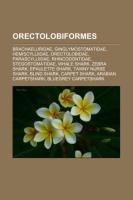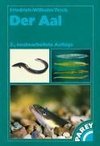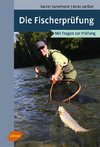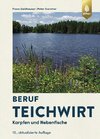
Orectolobiformes
Source: Wikipedia. Pages: 27. Chapters: Brachaeluridae, Ginglymostomatidae, Hemiscylliidae, Orectolobidae, Parascylliidae, Rhincodontidae, Stegostomatidae, Whale shark, Zebra shark, Epaulette shark, Tawny nurse shark, Blind shark, Carpet shark, Arabian carpetshark,... Viac o knihe
Produkt je dočasne nedostupný
13.64 €
bežná cena: 15.50 €
O knihe
Source: Wikipedia. Pages: 27. Chapters: Brachaeluridae, Ginglymostomatidae, Hemiscylliidae, Orectolobidae, Parascylliidae, Rhincodontidae, Stegostomatidae, Whale shark, Zebra shark, Epaulette shark, Tawny nurse shark, Blind shark, Carpet shark, Arabian carpetshark, Bluegrey carpetshark, Wobbegong, Whitespotted bamboo shark, Brownbanded bamboo shark, Orectolobus, Grey bamboo shark, Indonesian speckled carpetshark, Orectolobus halei, Slender bamboo shark, Burmese bamboo shark, Hasselt's bamboo shark, Orectolobus hutchinsi, Ornate wobbegong, Nebrius, Northern wobbegong, Spotted wobbegong, Short-tail nurse shark, Papuan epaulette shark, Saddle carpetshark, Cobbler wobbegong, Japanese wobbegong, Hooded carpetshark, Barbelthroat carpetshark, Rusty carpetshark, Necklace carpetshark, Taiwan saddled carpetshark, Collared carpetshark, Tasselled wobbegong, Orectolobus reticulatus, Dwarf spotted wobbegong, Ginger carpetshark, Bluespotted bamboo shark, Floral banded wobbegong, Parascyllium. Excerpt: The whale shark, Rhincodon typus, is a slow-moving filter feeding shark, the largest living fish species. The largest confirmed individual was 12.65 metres (41.50 ft) in length. The heaviest weighed more than 36 tonnes (79,000 lb), but unconfirmed claims report considerably larger whale sharks. This distinctively-marked fish is the only member of its genus Rhincodon and its family, Rhincodontidae (called Rhinodontes before 1984), which belongs to the subclass Elasmobranchii in the class Chondrichthyes. The shark is found in tropical and warm oceans, lives in the open sea with a lifespan of about 70 years. The species originated about 60 million years ago. Although whale sharks have very large mouths, they feed mainly, though not exclusively, on plankton, microscopic plants and animals, although the BBC program Planet Earth filmed a whale shark feeding on a school of small fish. The species was distinguished in April 1828, following the harpooning of a 4.6 metres (15.1 ft) specimen in Table Bay, South Africa. Andrew Smith, a military doctor associated with British troops stationed in Cape Town described it the following year. He published a more detailed description in 1849. The name "whale shark" comes from the fish's physiology; as large as a whale, it too is a filter feeder. The whale shark inhabits all tropical and warm-temperate seas.They are known to migrate every spring to the continental shelf of the central west coast of Australia. The coral spawning of the area's Ningaloo Reef provides the whale shark with an abundant supply of plankton. Primarily pelagic, seasonal feeding aggregations occur at several coastal sites such as the southern and eastern parts of South Africa; Gladden Spit in Belize; Ningaloo Reef in Western Australia; Útila in Honduras; Donsol, Pasacao and Batangas in the Philippines; off Isla Mujeres and Isla Holbox in Yucatan, Mexico; Ujung Kulon National Park in Indonesia; Nosy Be in Madagascar Off Tofo Reef near Inhambane in Mozambique, and
- Vydavateľstvo: Books LLC, Reference Series
- Formát: Paperback
- Jazyk:
- ISBN: 9781156054673


 Nemecký jazyk
Nemecký jazyk 









